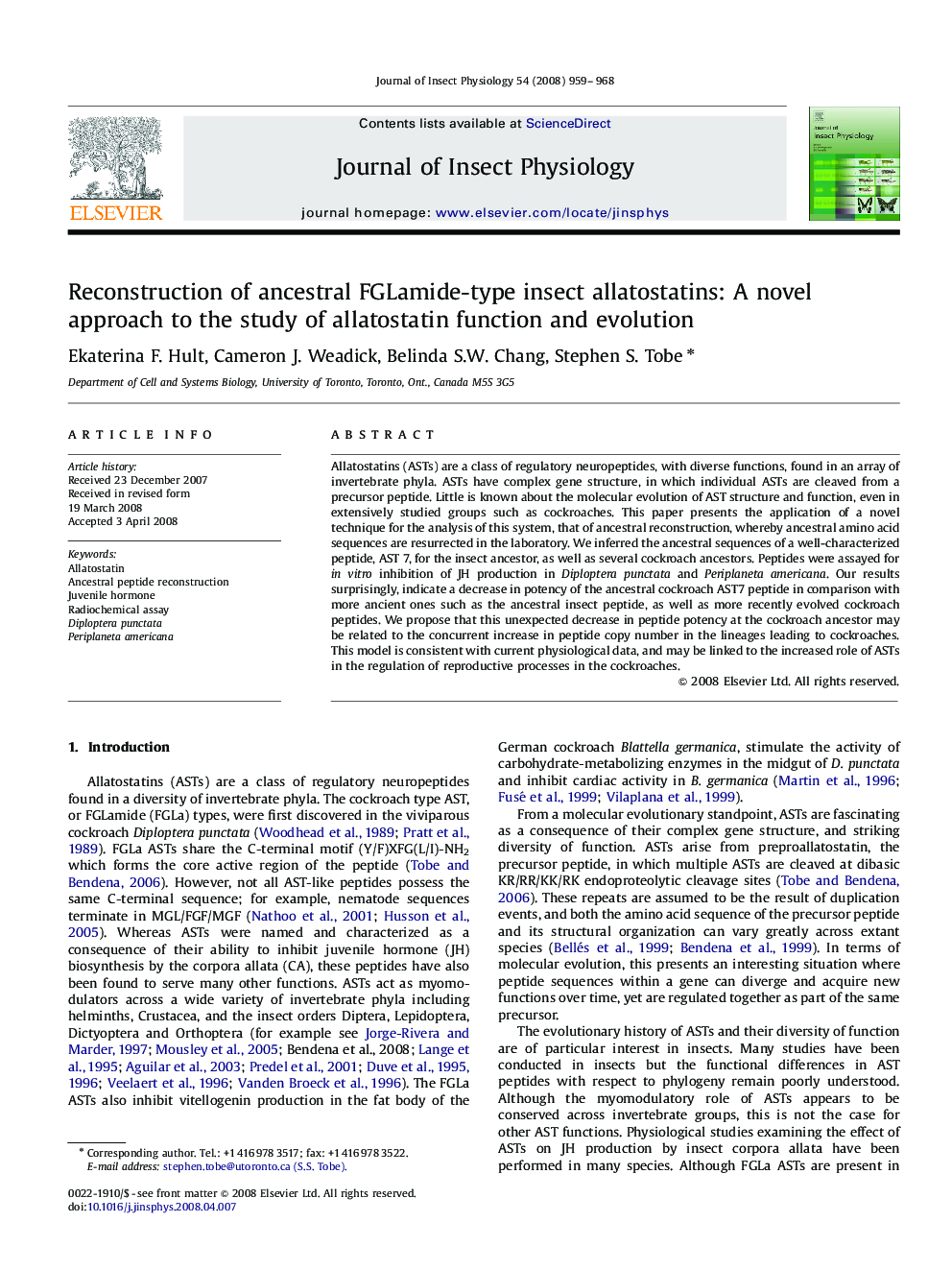| Article ID | Journal | Published Year | Pages | File Type |
|---|---|---|---|---|
| 2841286 | Journal of Insect Physiology | 2008 | 10 Pages |
Allatostatins (ASTs) are a class of regulatory neuropeptides, with diverse functions, found in an array of invertebrate phyla. ASTs have complex gene structure, in which individual ASTs are cleaved from a precursor peptide. Little is known about the molecular evolution of AST structure and function, even in extensively studied groups such as cockroaches. This paper presents the application of a novel technique for the analysis of this system, that of ancestral reconstruction, whereby ancestral amino acid sequences are resurrected in the laboratory. We inferred the ancestral sequences of a well-characterized peptide, AST 7, for the insect ancestor, as well as several cockroach ancestors. Peptides were assayed for in vitro inhibition of JH production in Diploptera punctata and Periplaneta americana. Our results surprisingly, indicate a decrease in potency of the ancestral cockroach AST7 peptide in comparison with more ancient ones such as the ancestral insect peptide, as well as more recently evolved cockroach peptides. We propose that this unexpected decrease in peptide potency at the cockroach ancestor may be related to the concurrent increase in peptide copy number in the lineages leading to cockroaches. This model is consistent with current physiological data, and may be linked to the increased role of ASTs in the regulation of reproductive processes in the cockroaches.
